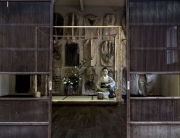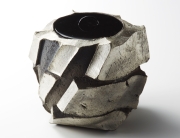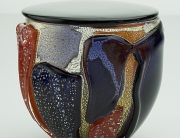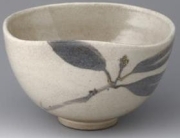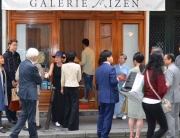Those who have been following the Paris Yakimono Gallery for some time now have noticed the recent emphasis on Tamba pieces. There are the Noborigama and Anagama exhibitions, and the entire Inauemon Tamba Yaki exhibition runs through May 18.
This is giving people an incredible opportunity to see tamba in a way that they haven’t before. This work is fired at temperatures that can exceed 1,300 degrees. This is especially true of pieces that adhere to a specific aesthetic that is known as haiyu.
When creating pieces that adhere to this aesthetic, artists start to mix a little bit of ash into the glaze. This helps to produce some unique effects, and naturally it gives each piece an entirely original character. In spite of the incredible heat, the firing time is actually still quite long.
In fact, getting the ash to adhere to the figures can take up to a week even at those high temperatures. Original inauemon pieces date back to the Edo period, which is roughly 280 years ago or so. Traditions have been passed down in families, and that means that pieces today still maintain the same kind of appearances that they have for a long time now.
As a result people are sort of getting to look at what might be construed as a living time capsule. These pieces encapsulate an entire design ethos that has been passed down amongst generations, which allows people to actually view art created by individuals who have trained under masters who themselves trained under people who were taught by the original creators.
While this is sometimes heard in the martial arts and in different fields like ikebana, few individuals get the opportunity to actually view pieces that are made in this fashion. The fact that they’re connected to tamba yaki makes it all that much better.
Anagama central hearth ovens have been in use since the Momoyama period of 1573-1600, though the original tamba kilns date back even further to the 12th century in the Heian period. In this manner the pieces can be viewed from another light as well. Not only have the techniques been passed down, but also the equipment is also every bit as authentic as possible. The original Edo and even Momoyama and Heian masters who crafted the original pieces these modern ones are based on worked with equipment that is not too entirely different at all.


